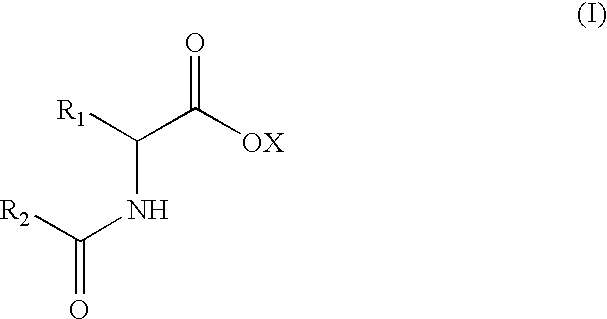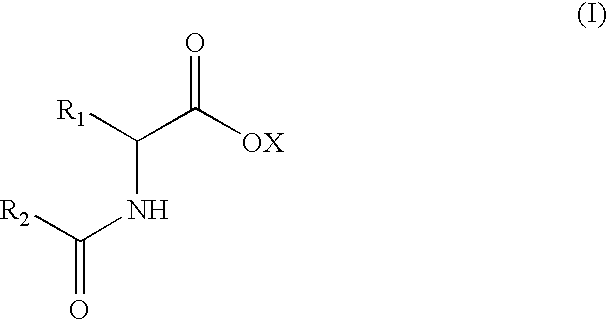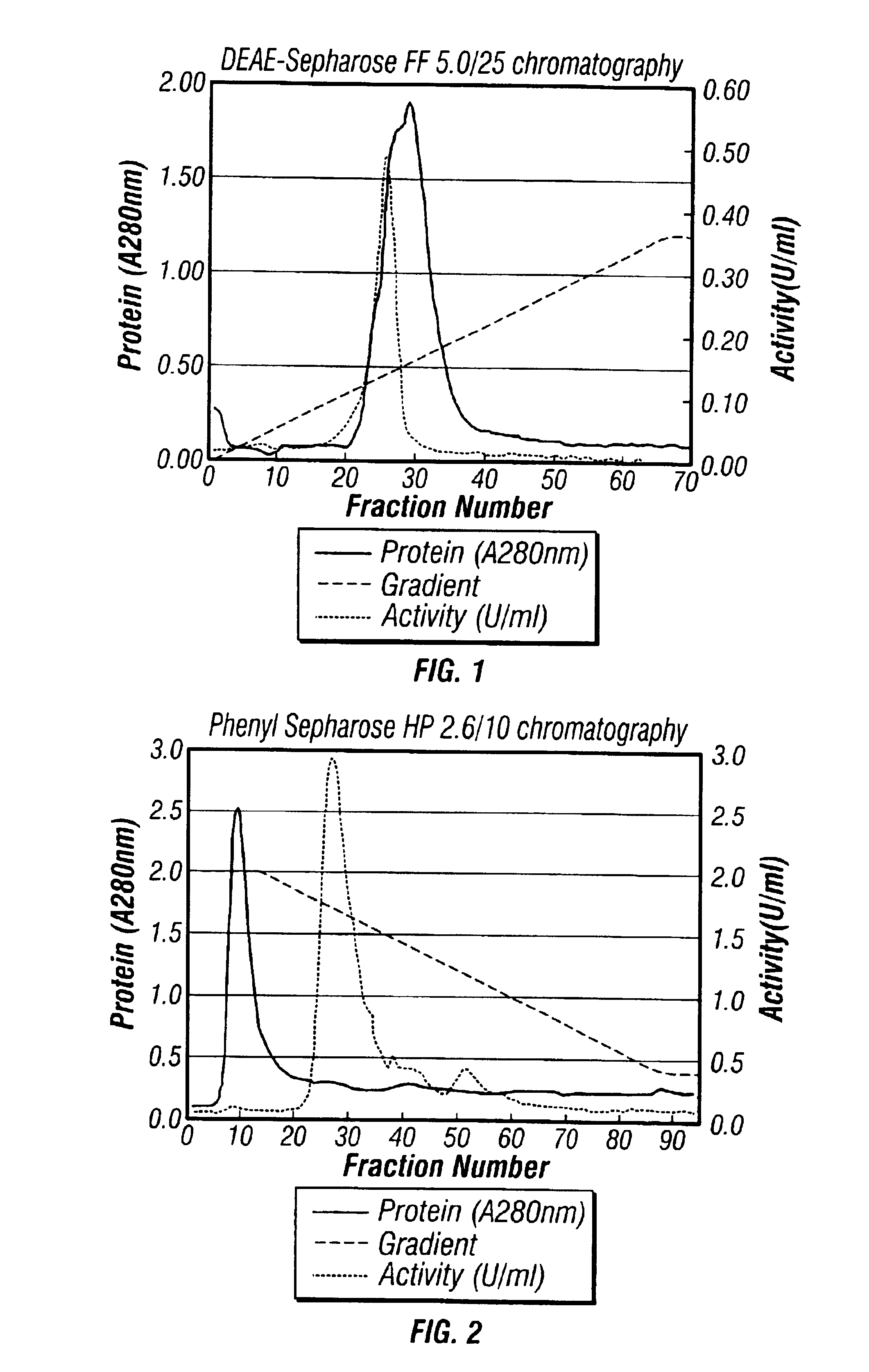D-aminoacylases, method for producing the same, and method for producing D-amino acids using the same
a technology of d-aminoacylase and d-amino acids, which is applied in the field of d-aminoacylase, can solve the problems of unpurified enzymes, unfavorable drug safety, and inability to purify enzymes,
- Summary
- Abstract
- Description
- Claims
- Application Information
AI Technical Summary
Benefits of technology
Problems solved by technology
Method used
Image
Examples
example 1
[0074]A platinum loopful of Hypomyces aurantius IFO 6847 strain, Hypomyces broomeanus IFO 9164 strain, Hypomyces rosellus IFO 6911 strain, Hypomyces chrysospermus IFO 6817 strain, Hypomyces sepulcralis IFO 9102 strain, Hypomyces subiculosus IFO 6892 strain, Hypomyces mycophilus ATCC 76474 or IFO 6785 strain, or Fusarium solani IFO 9974 or IFO 9975 strain was inoculated into 25 ml of YM medium (containing 0.3% yeast extract, 0.3% malt extract, 0.5% peptone, and 2.0% glucose, pH 6.0) in a 500-ml shouldered flask. The fungi were shake-cultured at 24° C. for 3 days. After culturing, a 5-ml aliquot of the culture medium was centrifuged in a refrigerated centrifuge to collect the fungal cells. The cells were washed with physiological saline solution (5 ml) and collected by centrifugation again. A reaction solution (containing 0.1% N-acetyl-D-amino acid shown in Table 1 below in Tris-HCl buffer, pH 7.5) was then added to the cells thus collected. The mixture was incubated in a 5-ml test tu...
example 2
[0078]A platinum loopful of Hypomyces rosellus IFO 6911 strain, Hypomyces sepulcralis IFO 9102 strain, or Hypomyces mycophilus IFO 6785 strain was inoculated into 25 ml of YM medium (containing 0.3% yeast extract, 0.3% malt extract, 0.5% peptone, and 2.0% glucose; pH 6.0) in a 500-ml shouldered flask. The fungi were shake-cultured at 24° C. for 3 days. After culturing, a 5-ml aliquot of the culture medium was centrifuged in a refrigerated centrifuge to collect the fungal cells. The cells were washed with physiological saline solution (5 ml), and collected by centrifugation again. A reaction solution (containing 0.1% N-acetyl-DL-amino acid shown in Table 2 below in Tris-HCl buffer, pH 7.5) was added to the cells thus collected. The mixture was incubated in a 5-ml test tube with shaking at 30° C. for 24 hours. D-Amino acid thus produced was assayed by high-performance liquid chromatography (column, CROWNPAK CR (Daicel Chemical); column temperature, 26° C.; mobile phase, HClO4 aqueous ...
example 3
[0081]Auricularia auriculajudae IFO 5949, Pythium aphanidermaatum IFO 7030, and Menisporopsis novaezelandiae IFO 9179 were each inoculated into sterilized media (100 ml each) (Czapek Dox Broth for IFO 5949, YM1 medium for IFO 7030, and POTATO DEXTROSE BROTH for IFO 9179) in 500-ml Erlenmeyer flasks. The fungi were cultured on a rotary shaker at 210 rpm at 24° C. for 7 days and collected by centrifugation using a HIMAC SCR 20B HITACHI centrifuge with a RPR10-2 rotor at 8,000 rpm (12,500×g) for 20 min. The cells thus sedimented were washed with 50 mM phosphate buffer (pH 7.0), dehydrated, and stored frozen.
[0082]In this experiment, POTATO DEXTROSE BROTH (DIFCO) was prepared by dissolving 24 g of the dried medium powder (a 10:1 mixture of Potato infusion form and Bacto Dextrose) in 1 liter of water, adding N-acetyl-DL-methionine (N—Ac—DL—Met) thereto to 0.1%, and adjusting the pH to 5.1. Czapek Dox Broth consisted of 0.3% NaNO3, 0.1% K2HPO4, 0.05% MgSO4. 7H2O, 0.05% KCl, 0.001% FeSO4. ...
PUM
| Property | Measurement | Unit |
|---|---|---|
| molecular weight | aaaaa | aaaaa |
| molecular weight | aaaaa | aaaaa |
| temperature | aaaaa | aaaaa |
Abstract
Description
Claims
Application Information
 Login to View More
Login to View More - R&D
- Intellectual Property
- Life Sciences
- Materials
- Tech Scout
- Unparalleled Data Quality
- Higher Quality Content
- 60% Fewer Hallucinations
Browse by: Latest US Patents, China's latest patents, Technical Efficacy Thesaurus, Application Domain, Technology Topic, Popular Technical Reports.
© 2025 PatSnap. All rights reserved.Legal|Privacy policy|Modern Slavery Act Transparency Statement|Sitemap|About US| Contact US: help@patsnap.com



